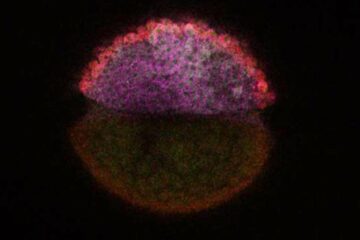New bioreactor for cultivation and pressure stimulation of cells and cell-matrix-composites

The invention concerns new bioreactor systems for cultivation and pressure stimulation of cell-matrix-composites.
A special aspect of the invention is that the device is composed in a way that generally available tissue culture plates (with up to 96 cavities) can be used as part of the new bioreactors. Through connection with a new device for pressure stimulation of the cells or composites a bioreactor system develops. This bioreactor system already has a lot of advantages compared to known systems because of the use of existing culture plates. However, it is also useful due to the fact that the stimulation of the cells or composites can take place with defined or undefined pressure and that durability and frequency of the pressure stimulation are freely programmable. The pressure stimulation can occur variably for every cavity. The change of medium and samples are carried out in a closed system and an easy cleaning is also possible. The invented bioreactor system also shows heating and/or cooling elements and means of pumping as well as sensors and control units for pH-value, temperature and pressure and runs either in the perfusion mode (continuous) or in the batch mode. In order to create pressure stimulations we use the generation of compressed air in one experiment and in an other, alternative one we use electromagnetic induction.
Further Information: PDF
TransMIT Gesellschaft für Technologietransfer mbH
Phone: +49 (0)641/943 64-12
Contact
Dr. Peter Stumpf
Media Contact
All latest news from the category: Technology Offerings
Newest articles

Attosecond core-level spectroscopy reveals real-time molecular dynamics
Chemical reactions are complex mechanisms. Many different dynamical processes are involved, affecting both the electrons and the nucleus of the present atoms. Very often the strongly coupled electron and nuclear…

Columbia researchers “unzip” 2D materials with lasers
The new technique can modify the nanostructure of bulk and 2D crystals without a cleanroom or expensive etching equipment. In a new paper published on May 1 in the journal…

Decoding development: mRNA’s role in embryo formation
A new study at Hebrew University reveals insights into mRNA regulation during embryonic development. The study combines single-cell RNA-Seq and metabolic labeling in zebrafish embryos, distinguishing between newly-transcribed and pre-existing…

















